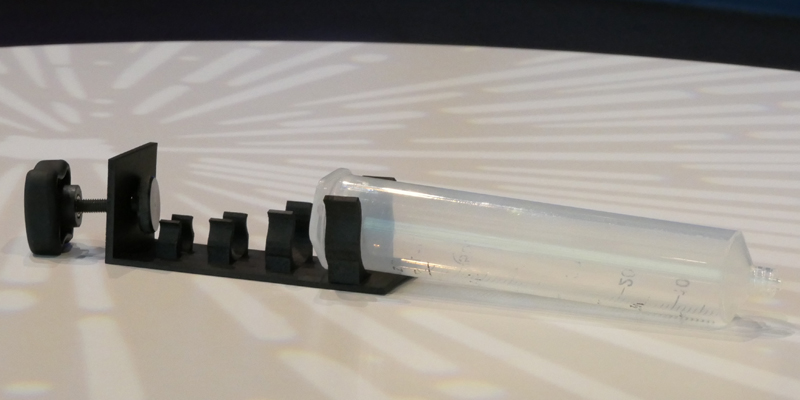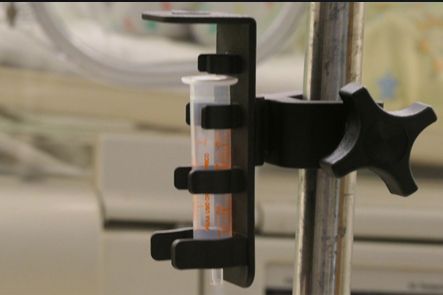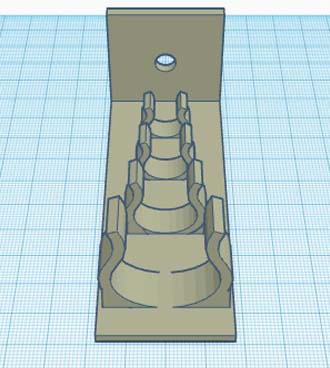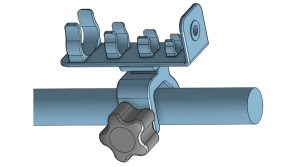Summary
This MInnovation/invention improves ease and efficiency of neonatal intensive care with a 3D-printed syringe holder.
Inventors
Tiffany Morris, RN
MedStar Franklin Square Medical Center
Background
Tiffany Morris, RN, cares for premature babies and their mothers in the Neonatal Intensive Care Unit (NICU) at MedStar Franklin Square Medical Center. Frequently, babies are so small at their birth that they are fed through a nasogastric feeding tube (a tube that enters the nose and leads to the stomach). Formula or breast milk is placed in a sterile syringe attached to the nasogastric tube. The milk drains via gravity from the syringe, through the tube, and into the baby’s stomach. Some NICU isolettes in use at MedStar Health do not have a place to hold the syringe while the baby is being fed, requiring a nurse to hold the syringe. This process can take up to 10 minutes—very valuable time for a NICU nurse.
What is it? What does it do?
Frequently, babies born in the Neonatal Intensive Care Unit (NICU) are so small at their birth that they are fed through a nasogastric feeding tube (a tube that enters the nose and leads to the stomach). Formula or breast milk is placed in a sterile syringe attached to the nasogastric tube. The milk drains via gravity from the syringe, through the tube, and into the baby’s stomach. Some NICU isolettes in use at MedStar Health do not have a place to hold the syringe while the baby is being fed, requiring a nurse to hold the syringe. This process can take up to 10 minutes—very valuable time for a NICU nurse.
Tiffany Morris, RN, created a device designed to hold multiple sizes of syringes while attached to the top of the NICU isolette or clamped to an IV Pole. The use of this device minimizes or eliminates the need for the use of a pump and is portable, increasing mobility.
Why is it better?
-
Recognizing the commercial potential for this product in treating patients beyond the NICU, MedStar Inventor Services selected the Gravity Feed Syringe Holder for further development as an invention.
-
Engineers from MedStar Health Simulation Training & Education Lab (MedStar Health SiTEL) helped construct a computer-aided design and drafting (CAD) model of the syringe holder and various prototypes were 3D printed.
-
The Gravity Feed Syringe Holder can be used in various hospital and residential settings compared to syringe holders that are specifically made for isolettes.
Photos
What is its current status?
While caring for premature babies and their mothers in the Neonatal Intensive Care Unit (NICU) at MedStar Franklin Square Medical Center, Tiffany created the Gravity Feed Syringe Holder and submitted it to the MInnovations team at MedStar Franklin Square.
After iterating the device through the CAD design and 3D printing process, Tiffany’s syringe holder is being piloted at MedStar Franklin Square. The device is also now the subject of a patent application and won the first Cool Ideas Award sponsored by Cleveland Clinic Innovations and Protolabs, Inc.
The MedStar Inventor Services team is now seeking a licensing/collaboration partner to develop and commercialize this technology. Please contact us at invent@medstar.net.














